May 21, 2025 | 16:55 GMT +7
May 21, 2025 | 16:55 GMT +7
Hotline: 0913.378.918
May 21, 2025 | 16:55 GMT +7
Hotline: 0913.378.918
Dong Trieu is a town in Quang Ninh province famous for its clam worm products. The natural clam worm area currently distributed along rivers in the town is 108 hectares. The breeding season of the clam worm concentrates mainly in two crops: the first at the end of April - the beginning of May and the second crop at the end of October - beginning of November.
During the breeding season, clam worms from underground burrows rise to the water surface along the streams to the estuary areas. The reproductive process is affected by the seasonal factors, environmental temperature, salinity, and tidal height.
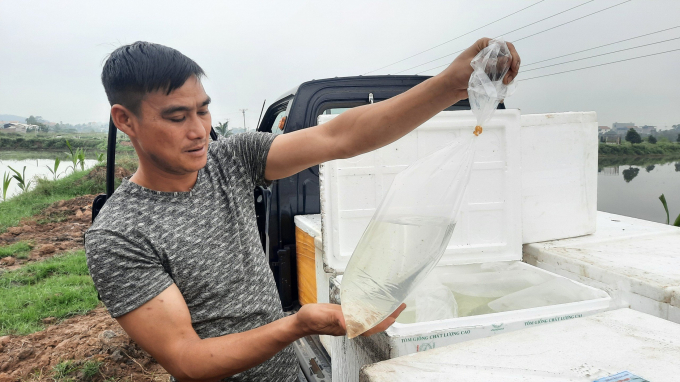
The breed factor is very important to a strong growth in clam worms, and can subsequently increase the yield. Photo: Nguyen Thanh.
After learning of the clam worms' value, many households in the town have boldly converting inefficient rice cultivation areas to encircled areas, along with embankment, improvement of ponds, lagoons and culverts in riverside alluvial flats in order to facilitate the natural growth and development of clam worms because they can only live in clean land and water.
According to the Department of Economic of Dong Trieu Town, clam worm is a specialty product that cannot survive if exposed to chemicals; so for an effective exploitation of fresh, nutritious, high productivity clam worms, farmers must follow traditional farming methods, and completely avoid chemical fertilizers as well as chemical pesticides.
After a period of research, clam worms can be raised in combination with rice for higher economic value. According to the assessment results, the combination of clam worms and rice cultivation complement one another; the clam worms are able to process organic wastes in the soil and water, creating fertilizers to help the rice stay healthy against pests and diseases without the need of pesticides. The improvement of the soil, the nurture as well as the growth and development process of rice plants have created an ideal shelter with an abundant food source suitable for clam worms' growth.
According to a report by Quang Ninh province Department of Agriculture and Rural Development, the total area of rice - clam worm in Dong Trieu, Uong Bi and Quang Yen reaches over 200ha. This is the basis to increase farmers' income using rice - clam worm model as well as to meet the needs of consumers.
Mr. Dang Van Xue (Kim Son ward, Dong Trieu town) shared that this area has periodic changing tides, so it is regularly filled with alluvium, creating an abundant source of nutrients for rice, and the natural minerals content in the soil is also very high.
“In addition to the rice yield, clam worms also provide my family with a stable source of income. With a relatively high market value at nearly 400,000 VND/kg; so much so that farmers are mainly harvesting clam worms, with rice as a supplement and to create a more favorable environment for the worms' development. Every time I harvest clam worm, I'll sell as much as I can", Mr. Xue shared happily.
At the beginning of 2022, Quang Ninh Agricultural Extension Center continues to experiment with applying new techniques in building a model of clam worm farming using socialized funds, in combination with new farming methods to increase productivity and quality.
The project " Development of commercial clam worm farming areas in combination with organic rice cultivation in Quang Ninh" was implemented in 2020 and 2021. The project was executed on a total area of 90 hectares in Quang Yen town, Uong Bi city and Dong Trieu town.

Harvested clam worms are sold to traders at nearly 400,000 VND/kg. Photo: Nguyen Thanh.
According to initial results, the project has organized 6 training courses (with 30 trainees per course); supported the farming of 135 million clam worm varieties; planted and granted certificates of organic rice for 90 hectares of rice under the project. The production criteria according to the project's target are: clam worm yield reaches 350-400 kg/hectare, harvest size reaches approximately 1,000 - 1,200 worms/kg.
The yield of rice on the field is 80-90 kg/sao, the yield is 85-90 tons of organic rice. The project has also helped to form clam worm areas that are well-invested by local farmers. The project participants have also applied farming techniques and replicated in 3 localities with an area of over 150 hectares (including 60 hectares in Dong Trieu, 70 hectares Uong Bi, 20 hectares in Quang Yen).
In order to deploy and apply new techniques in rice cultivation, the Quang Ninh Agricultural Extension Center has encouraged Phuong Anh Service Co., Ltd (Hai Phong City) and several households in Dong Trieu Town to jointly contribute funds, coordinate to implement the modelof agricultural extension socialization, as well as apply new farming methods to increase productivity and quality.
According to Mr. Nguyen Ba Lam, Deputy Director of Quang Ninh Agricultural Extension Center, this is a very impactful and practical model to actively reinforce the density of clam worms, despite the late stocking (the suitable season for stocking starts from May 9 to May 12 in lunar calendar). With the technique of adding homemade feed from agricultural by-products, clam worms can be harvested from October to December 2022 (in lunar calendar).
The Quang Ninh Agricultural Extension Center will continue to provide technical guidance, model monitoring, and document implementation steps so that it can implement the Project to develop organic rice - clam worm growing areas at a higher level.
Dong Trieu clam worms has a fleshy, fatty feeling and a greasy taste when eaten; the worms are also very rich in nutrients. Clam worms can be used to prepare many delicious dishes such as clam worm rolls, clam worm soup, braised clam worm, fried clam worm, clam worm sauce. Notably, fried clam worm and braised clam worm are the two most popular products that visitors buy for consumption or as gifts. In addition to the main consumption market in Quang Ninh province, Dong Trieu clam worms are also sold in Hanoi, Hai Phong, and Nam Dinh.
Translated by Nguyen Hai Long
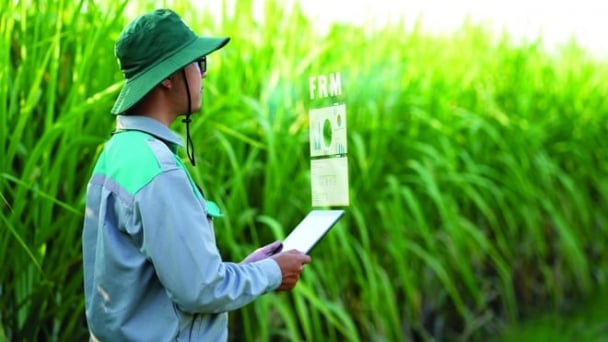
(VAN) At the conference to disseminate Resolution No. 68, AgriS introduced its digital agricultural ecosystem and reaffirmed its commitment to accompanying the Government in promoting private sector development and sustainable agriculture.
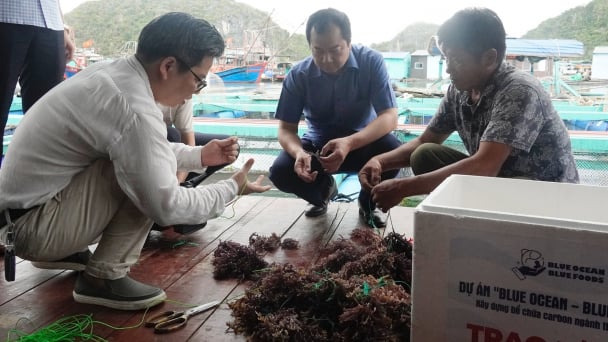
(VAN) 'Blue Ocean - Blue Foods' initiative is designed to restore marine ecosystems and establish sustainable livelihoods for local communities by cultivating a minimum of 1,000 hectares of cottonii seaweed in the first three years.
/2025/05/21/4642-3-112707_603.jpg)
(VAN) The V-SCOPE project has made direct contributions to three out of six pillars of the Comprehensive Strategic Partnership between Vietnam and Australia.
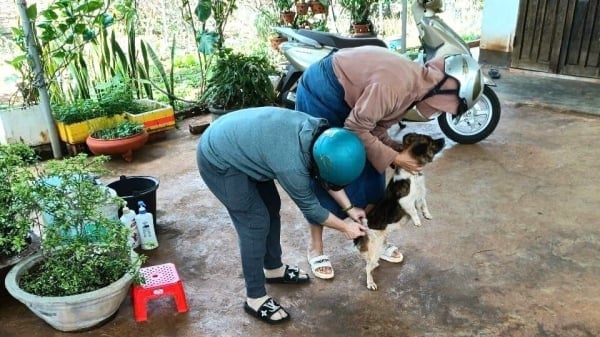
(VAN) Facing the threat of rabies spreading to the community, Gia Lai province urgently carries out measures to vaccinate dogs and cats on a large scale.
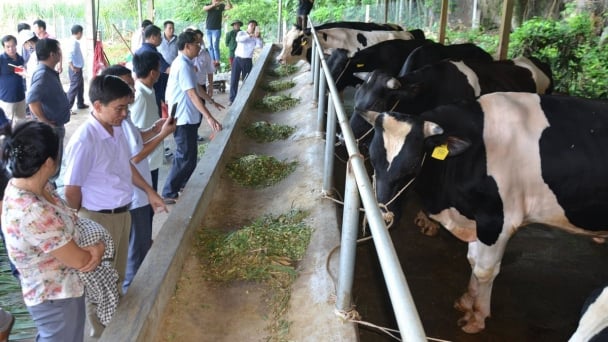
(VAN) Disease-free livestock farming not only protects livestock herds but also stabilizes production and livelihoods for many farmers in Tuyen Quang.
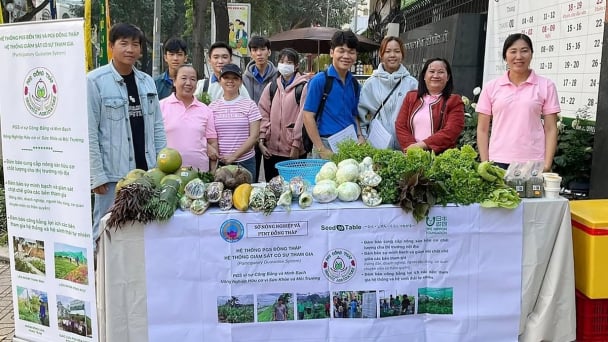
(VAN) Japan's grant aid project contributes to capacity building, promoting organic agricultural production, and fostering sustainable community development in Dong Thap province.

(VAN) For years, the CRISPR-Cas9 genome technology has been reshaping genetic engineering, a precision tool to transform everything from agriculture to medicine.